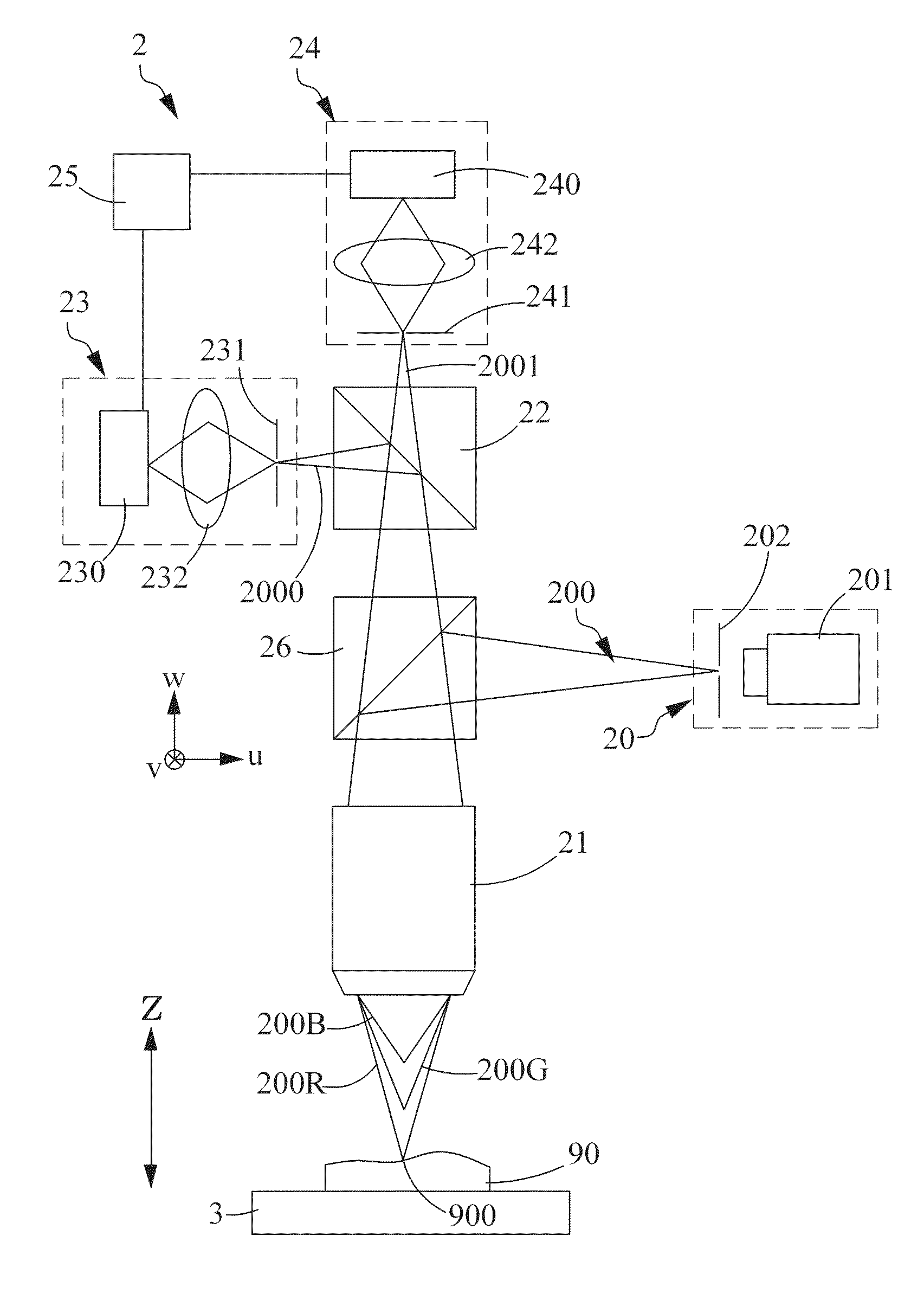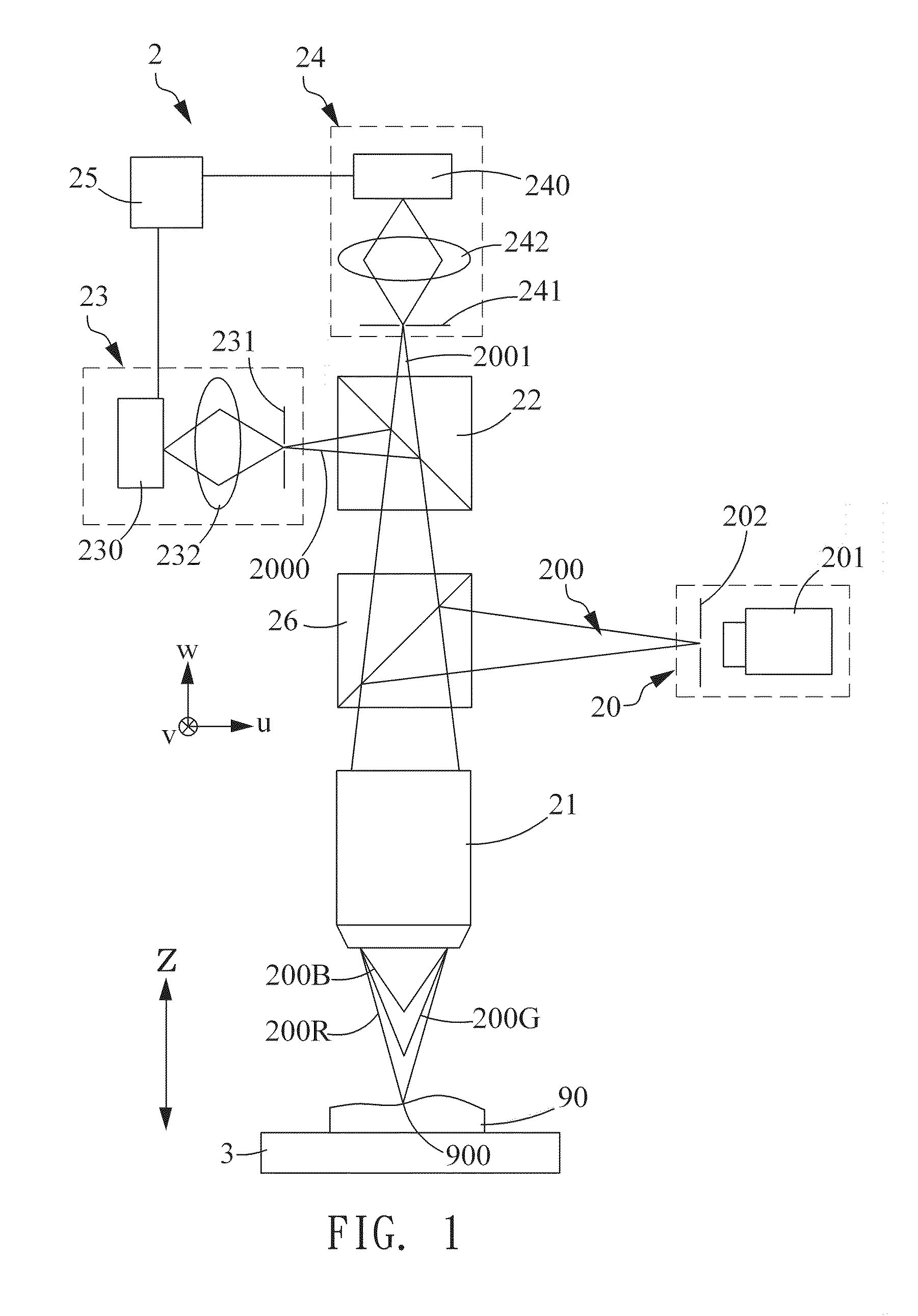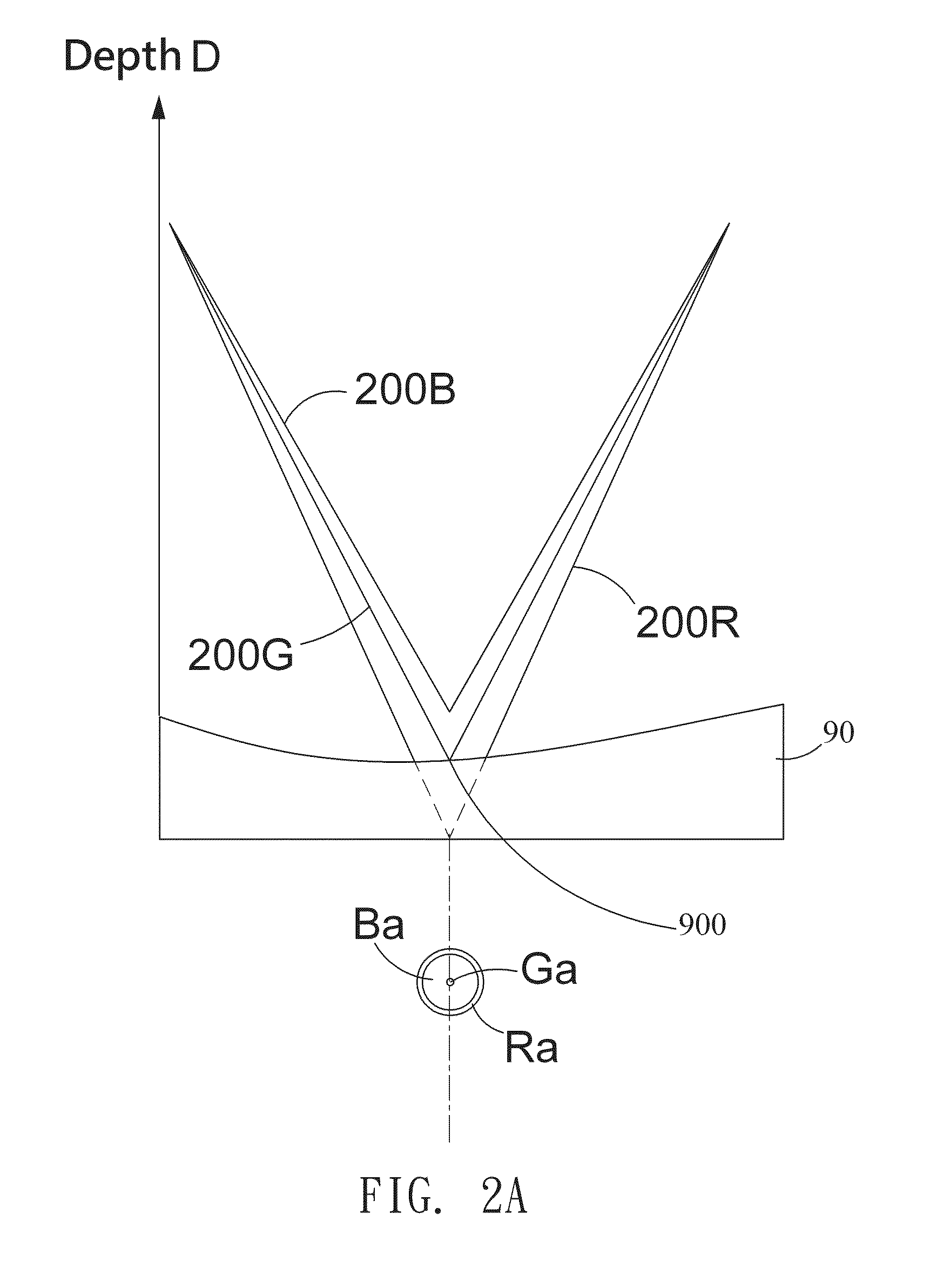Differential filtering chromatic confocal microscopic system
- Summary
- Abstract
- Description
- Claims
- Application Information
AI Technical Summary
Benefits of technology
Problems solved by technology
Method used
Image
Examples
first embodiment
[0036]Please refer to FIG. 1 which illustrates a differential filtering chromatic confocal microscopic system according to the present invention. In the present embodiment, the differential filtering chromatic confocal microscopic system 2 comprises a light source module 20, a chromatic dispersion objective 21, a first optical modulation module 22, and a pair of first optical intensity sensing module 23 and 24, and a signal processing unit 25. The light source module 20 provides a broadband light 200, which can be, but should not limited to, single color light having a specific bandwidth such as red light (620 nm˜750 nm), green light (495 nm˜570 nm), or blue light (476˜495 nm). Alternatively, in another embodiment, the broadband light 200 can also be a composite light having a plurality of color spectrum, such as a white light having wavelength spectrum ranging from 380 nm to 750 nm. In the present embodiment, the broadband light is a white light.
[0037]In addition, the light source ...
second embodiment
[0063]Please refer to FIG. 6A, which illustrates a differential filtering chromatic confocal microscopic system according to the present invention. The confocal microscopic system 2a is basically similar to the system shown in FIG. 1, wherein the difference is that the light generated by the light source module 20 is a broadband light with a monochromatic spectrum such as red light spectrum 620 nm˜750 nm, green light spectrum 495 nm˜570 nm, or blue light spectrum 476 nm˜495 nm, each of which could be the broadband light emitted from the light source module 20.
[0064]In one embodiment, the light source module 20 comprises a color filter 203 such as red light filter, green light filter, or blue light filter, which allows a monochromatic spectrum passing therethrough. The color filter 203 is arranged between the shaping element 202, and the light generating device 201. When the white light generated from the light generating device 201 passes the color filter 203, a monochromatic broadb...
third embodiment
[0068]Please refer to FIG. 6B, which illustrates a differential filtering chromatic confocal microscopic system according to the present invention. In the present invention, the system 2b is basically similar to the system shown in FIG. 1, wherein the difference therebetween is that the first optical intensity sensing module 23 and 24 respectively comprise a monochromatic color filters 233 and 243 which are respectively arranged between the first light intensity sensing devices 230′ and 240′ and collecting elements 232 and 242. The monochromatic color filters 233 and 243 respectively filter the first and second object lights 2000 and 2001 so as to form two monochromatic object lights, respectively, wherein one of the monochromatic object light is detected by the first light intensity sensing device 230′ for generating a first optical intensity signal and the other monochromatic object light is detected by the second light intensity sensing device 240′ for generating a second optical...
PUM
 Login to View More
Login to View More Abstract
Description
Claims
Application Information
 Login to View More
Login to View More - R&D
- Intellectual Property
- Life Sciences
- Materials
- Tech Scout
- Unparalleled Data Quality
- Higher Quality Content
- 60% Fewer Hallucinations
Browse by: Latest US Patents, China's latest patents, Technical Efficacy Thesaurus, Application Domain, Technology Topic, Popular Technical Reports.
© 2025 PatSnap. All rights reserved.Legal|Privacy policy|Modern Slavery Act Transparency Statement|Sitemap|About US| Contact US: help@patsnap.com



